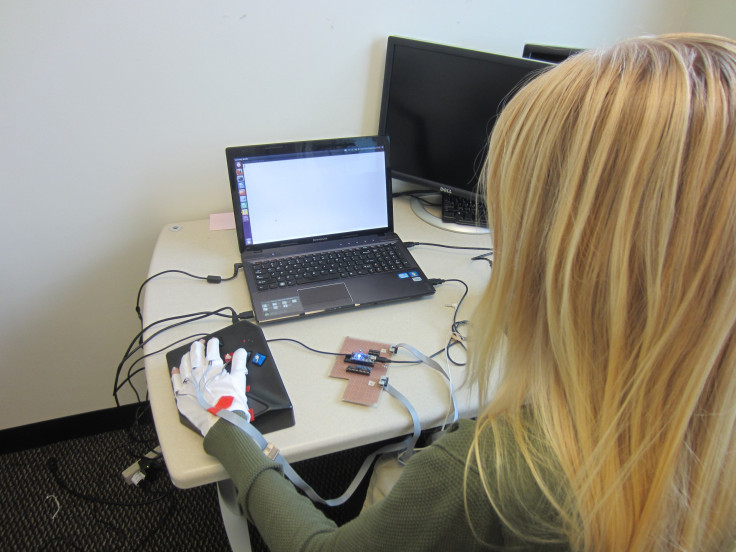Braille Study Proves Wearable Technology May Someday Help You 'Passively' Learn Language

Haptic learners are people who need to DO in order to understand and remember. (Most of us?) The Greek word, haptikos, which means able to touch, describes an educational approach focusing on direct experience. Now a team of Georgia Institute of Technology researchers have created a technology-enhanced glove that helps visually-impaired people haptically learn how to read and write Braille. Most importantly, people using this wearable technology don’t even have to pay attention while learning as the glove does all the hard work for them.
“The process is based on passive haptic learning,” said Dr. Thad Starner, director of the Contextual Computing Group at Georgia Tech and technical lead/manager on Google's Project Glass. “We’ve learned that people can acquire motor skills through vibrations without devoting active attention to their hands.”
Why is Braille Important?
Nearly 40 million people worldwide are blind. However, only 10 percent learn Braille, which is widely neglected in schools today. Braille is not a language. Rather, it is a code by which any language — English, say, Spanish or Japanese — may be written and read. Braille is a series of raised dots that can be read with the fingers. Braille is said to be difficult to learn later in life, yet that’s exactly when diabetics, wounded veterans, and older people who have lost their sight would most benefit from this code. Understanding this difficulty, Starner and doctoral student Caitlyn Seim decided they would try to teach a group of volunteers how to read Braille.
They began by modifying an existing wearable technology from a previous Georgia Tech project in which beginners learned how to play piano melodies in 45 minutes using a vibrating glove. For the Braille study, then, Starner and Seim began by enlisting participants who had no knowledge of Braille and had never typed on a Braille keyboard. First, they outfitted each participant with a pair of gloves containing tiny motors stitched into the knuckles. The motors vibrated in a sequence that corresponded with the typing pattern of a phrase in Braille while audio cues let the users know the Braille letters produced by the typing pattern. After a first run, participants tried to type the phrase, without the cues or vibrations, on a keyboard.
Next, the researchers repeated this experiment, but this time they distracted the participants, telling them to continue wearing (but ignore) the gloves and to play a game for 30 minutes. During this second phase of the experiment, half the participants felt repeated vibrations and heard the cues, while the other half only heard audio cues as they played their games. When game-time ended, all the participants were asked to type the phrase without wearing the gloves. Observing their efforts, the researchers expected to see a wide disparity between the two groups and they were not disappointed.
“Those in the control group did about the same on their second attempt (as they did in their pre-study baseline test),” Starner said. “But participants who felt the vibrations during the game were a third more accurate. Some were even perfect.”
Surprisingly, the researchers found the passive learners had picked up an additional skill. “Remarkably, we found that people could transfer knowledge learned from typing Braille to reading Braille,” Seim said. “After the typing test, passive learners were able to read and recognize more than 70 percent of the phrase’s letters.”
Starner and Seim plan to present their work at the 18th International Symposium on Wearable Computers in Seattle this coming September. Meanwhile, Seim continues to work on a second study teaching participants by using only passive haptic learning (PHL). The goal of this new study? Participants will learn the entire Braille alphabet after just four sessions. “The only learning they received was guided by the haptic interface,” Seim said. Sure enough, after only four hours, the PHL participants have been able to recognize and read more than 90 percent of all the letters in the Braille alphabet. Time for a test run using adults!
Published by Medicaldaily.com



























